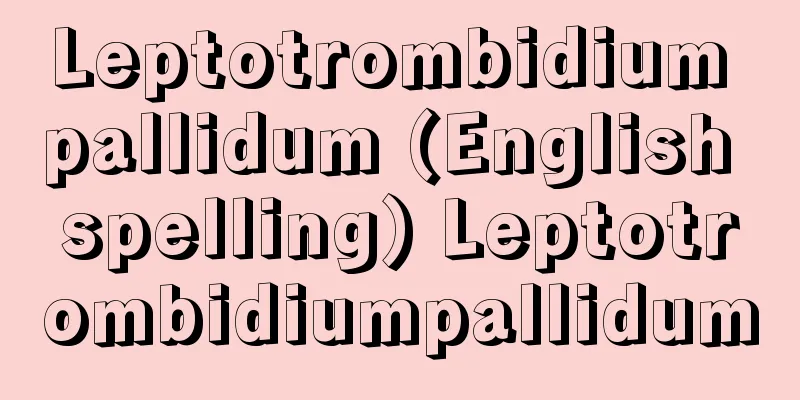Amarna Period - Amarna Period

|
The 18th Dynasty of the Egyptian New Kingdom, under the reign of Amenhotep III and IV. This period runs from around 1417 BC to around 1362 BC. The foreign campaigns of the previous kings, Thutmose III, Amenhotep II, and Thutmose IV, brought immense wealth to Egypt, but at the same time, the influx of different cultures from other ethnic groups had a major impact on the existing culture. During the reign of Amenhotep III, cultural exchange with Asian countries such as Mitanni and Hittite was active. During the reign of Amenhotep IV, the power of the priesthood of Amon in Thebes grew abnormally, and the kingship itself came into doubt. Concerned about this, Amenhotep IV established the sun god Aten as the absolute and only god and carried out religious reforms in order to break away from the worship of Amon in Thebes. As a first step, in the 6th year of his reign he began the construction of Akhet-Aten (meaning Horizon of Aten, today's Tell el-Amarna), and in the 8th year he moved the capital from Thebes there and changed the king's name to Akhenaten (Splendor of Aton). This religious reform was not limited to religion, but also affected art, particularly murals, sculptures, temple architecture, and in literature, a wide range of trial and error was carried out that rejected tradition, with a shift from literary to colloquial language. In other words, the idealism that had dominated art in the early New Kingdom period changed in this period to a tendency towards realism and naturalism. [Yoshihiro Omura] MuralThe paintings were based on a free imagination, unconstrained by traditional traditions. The tomb of Akhet-Aten features a detailed depiction of the parents grieving over the death of their daughter, a style that is perfectly consistent with realism. Signs of this style can also be seen in the murals of the tombs of nobles on the west bank of Thebes, and it can be said that the foundations of realism were already established before the capital was moved. [Yoshihiro Omura] StatueThe sculptures are based on realism and naturalism. In Akhenaten's sculptures, it is possible to read into the inner character of the king himself, and in the head of Nefertiti (wife of Akhenaten) discovered in the workshop of Akhet-Aten, the lips, eyes, and the gentle, beautiful lines from the chin to the chest of the queen are accurately depicted. [Yoshihiro Omura] templeDuring the reign of Amenhotep III, the Luxor Temple and the king's own funeral temple on the west bank of Thebes were built using the wealth accumulated during the reign of the previous kings, and the construction methods and plans themselves could be said to have followed tradition. However, although Akhet-Aten's temple architecture faced east as per the conventional methods, the hypostyle hall seen in the Luxor Temple and other temples was abolished in consideration of the light. Also, because this temple was built in a hurry, stone was not used extensively as in the conventional construction materials, and sun-dried bricks were mainly used, so the temple itself lacked the majestic grandeur and dignity. The Amarna period came to an end with the death of Akhenaten. During the reign of King Tutankhamun, a reconciliation was reached between the king and the priesthood, who wanted to restore the old order, and the capital was moved back to Thebes from Akhet-Aten, and the worship of Amun was revived. However, although the old order was restored on the surface, the realism and naturalism that had once swept through art had a strong influence even in the following eras. [Yoshihiro Omura] Source: Shogakukan Encyclopedia Nipponica About Encyclopedia Nipponica Information | Legend |
|
エジプト新王国第18王朝、アメンヘテプ3世、4世の治世。紀元前1417年ごろから前1362年ごろまでの時代をいう。前代のトゥトメス3世、アメンヘテプ2世、トゥトメス4世の外征で、エジプトには莫大(ばくだい)な富がもたらされたと同時に、他民族の異文化が流入したことによって既存の文化は多大な影響を受けた。アメンヘテプ3世の時代は、アジアのミタンニ、ヒッタイトなどの国々と文化交流が盛んに行われた。アメンヘテプ4世の時代に入ると、テーベのアモンの神官団の権力が異常に増大し、王権自体が危ぶまれてきた。それを憂慮した4世は、治世4年、アトンという太陽神を絶対唯一神とし、テーベのアモンの信仰崇拝から脱すべく宗教改革を行った。その手始めとして、治世6年、アケト・アテン(アテンの地平線という意味。今日のテル・エル・アマルナ)の建設を開始、治世8年、テーベからここに都を移し、王名もイクナートン(アトンの光輝)と改名した。この宗教改革は、単に宗教のみにとどまらず、芸術、とくに壁画、彫像、神殿建築、また文学においては文語体から口語体へと、伝統を否定する種々の試行錯誤が多岐にわたって行われた。つまり新王国時代初頭に支配していた芸術における理想主義が、この時代に入って写実、自然主義の傾向へと変化していった。 [大村幸弘] 壁画従来の伝統に拘束されることなく、自由な発想を背景に描かれている。アケト・アテンの王廟(おうびょう)には、王女の死を悲しむ両親の姿が克明に描かれており、写実主義がみごとに貫かれているが、テーベの西岸にある貴族の墓の壁画にも、その兆候は認められ、遷都以前にすでに写実主義の基礎が確立されていたといえる。 [大村幸弘] 彫像彫像も写実、自然主義を基本としている。イクナートンの彫像は、王自身の内面的性格すら読み取ることができるし、アケト・アテンの工房で発見されたネフェルティティ(イクナートンの妃(ひ))の頭部像では、王妃の唇、目、そして顎(あご)から胸へかけての穏やかな美しい線など、実に正確に写実されている。 [大村幸弘] 神殿アメンヘテプ3世の時代には、前諸王の時代に蓄積された富をもとにルクソール神殿、テーベ西岸に王自身の葬祭殿が造営されたが、構築方法、プラン自体は伝統を踏襲したものといえる。しかし、アケト・アテンの神殿建築は、方位的には従来どおり東向きではあったが、光線を配慮したためルクソール神殿などにみられる多柱室は廃止された。またこの神殿は急遽(きゅうきょ)造営されたこともあって、建築資材に従来のように石材は多用されず、日干しれんががおもに使用されたため、神殿自体荘厳な重厚さには欠けていた。 アマルナ時代はイクナートンの死後終わりを告げた。ツタンカーメン王の時代に入り、旧秩序の回復を望む神官団と王との間に和解が成立、都もアケト・アテンからふたたびテーベへ戻され、アモン信仰が復活した。しかし、表面的には旧秩序が回復したものの、芸術に一度吹き荒れた写実、自然主義は、次の時代にまで強い影響を与えた。 [大村幸弘] 出典 小学館 日本大百科全書(ニッポニカ)日本大百科全書(ニッポニカ)について 情報 | 凡例 |
Recommend
Iyahiko Shrine
…It is commonly known as Yahikojinja, but the cor...
Famous family - Meika
One of the Hundred Schools of Thought in ancient ...
Mankoku - Mankoku
A type of agricultural tool used to separate grain...
Pirate Style
… (1) Nojima-ryu (Nojima-ryu) It is also written ...
Emergency medical center
A medical institution that provides advanced medi...
External cylindrical grinding machine
A machine tool that applies a rapidly rotating gri...
Terumoto Mori
Year of death: 27th April 1625 (2nd June 1625) Yea...
Happytonema
…A class of plant classification established by C...
Tiger Fern
An evergreen fern of the family Pteridophyllaceae....
Kaizu
A place name in Takashima County, Omi Province, on...
Catapult - Catapult (English spelling)
A device that uses gunpowder, steam power, spring...
Zantedeschia rehmannii (English spelling) Zantedeschia rehmannii
… [Takabayashi Masatoshi]. … *Some of the termino...
Undersea cliff - Kaiteigai
…As plates are produced and separated, the traces...
Ohara Shrine - Ohara Shrine
...During the winter farming off-season, many peo...
American Free Trade Association
...The United States launched the Alliance for Pr...









